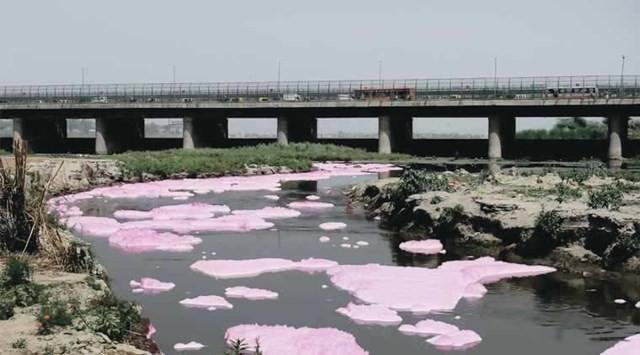
People Living Near River Drains Face a High Risk of Cancer: Study
River drains are a vital part of our ecosystem, helping to remove waste and pollutants from our communities. However, a recent study by the Indian Council of Medical Research (ICMR) has raised serious concerns about the health risks associated with living near these drains. According to the study, people living in areas surrounding river drains are at a higher risk of developing cancer.
The findings of the study were recently shared in the Rajya Sabha, and they are a wake-up call for authorities to take immediate action to mitigate the risks. The study revealed that the hazard quotients in these areas exceeded safe limits, leading to serious health concerns. The presence of hazardous substances like lead, iron, and aluminium in the environment was found to be a major contributor to this risk.
The ICMR study is a stark reminder of the importance of environmental health and the need for authorities to take proactive measures to protect communities living near river drains. The findings of the study are a cause for concern, and it is essential that we take immediate action to address these risks.
So, what exactly are the risks associated with living near river drains, and what can be done to mitigate them? In this blog post, we will delve into the details of the study, the risks associated with river drains, and what can be done to reduce these risks.
The Study: A Wake-Up Call
The ICMR study was conducted to assess the health risks associated with living near river drains. The study involved collecting water and soil samples from areas surrounding river drains and analyzing them for the presence of hazardous substances.
The results of the study were alarming. The hazard quotients in these areas exceeded safe limits, indicating a high risk of health problems, including cancer. The presence of lead, iron, and aluminium in the environment was found to be a major contributor to this risk.
The study found that the concentration of lead in the soil and water samples exceeded the limit prescribed by the Central Pollution Control Board (CPCB). Lead is a potent neurotoxin that can cause serious health problems, including cancer, if ingested or inhaled.
Iron and aluminium were also found to be present in excess of the safe limits. Iron can cause respiratory problems and damage to the liver and kidneys, while aluminium has been linked to neurological disorders and kidney damage.
The Risks: What Are They?
So, what are the risks associated with living near river drains? The ICMR study highlights the following risks:
- Cancer: The presence of hazardous substances like lead, iron, and aluminium in the environment increases the risk of developing cancer.
- Neurological Disorders: Exposure to lead and other hazardous substances can cause neurological disorders, including memory loss, mood changes, and cognitive impairment.
- Respiratory Problems: Iron and other airborne pollutants can cause respiratory problems, including asthma, bronchitis, and chronic obstructive pulmonary disease (COPD).
- Kidney Damage: Aluminium and other hazardous substances can cause kidney damage, leading to kidney disease and failure.
- Liver Damage: Iron and other hazardous substances can cause liver damage, leading to liver disease and failure.
What Can Be Done to Mitigate the Risks?
The findings of the ICMR study are a wake-up call for authorities to take immediate action to mitigate the risks associated with living near river drains. Here are some measures that can be taken:
- Monitoring: Regular monitoring of water and soil samples is essential to identify areas of high risk.
- Cleanup: Cleanup efforts should be undertaken to remove hazardous substances from the environment.
- Waste Management: Proper waste management practices should be implemented to prevent the release of hazardous substances into the environment.
- Education: Public education campaigns should be conducted to raise awareness about the risks associated with living near river drains.
- Research: Further research is needed to understand the long-term effects of exposure to hazardous substances on human health.
Conclusion
Living near river drains poses a high risk of cancer and other serious health problems. The ICMR study highlights the need for authorities to take immediate action to mitigate these risks. By implementing measures to monitor and cleanup contaminated areas, improving waste management practices, and educating the public, we can reduce the risks associated with living near river drains.
It is essential that we take proactive measures to protect our communities and ensure that everyone has access to a safe and healthy environment. The ICMR study is a wake-up call for authorities to take immediate action to address the risks associated with living near river drains.
Source:






